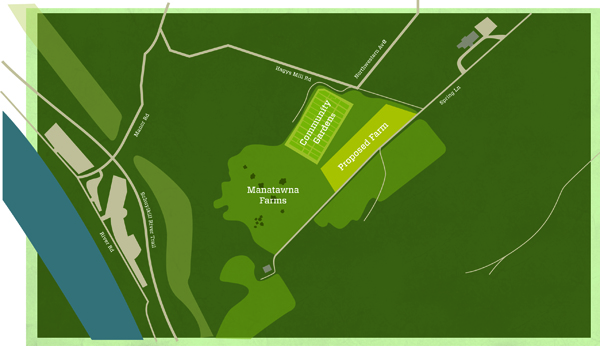 A fight erupts over an urban farm project in Roxborough
A fight erupts over an urban farm project in Roxborough
by Nic Esposito
Is a local Philadelphia food system just a curiosity—something that looks good on grant applications—or can it sustain our city? Does it work by revitalizing a portion of the city’s vacant lots or do we rely on the surrounding rural counties to support our agricultural needs? These are just a few of the questions the urban agriculture movement must tackle in the coming years.
This summer the Department of Parks and Recreation released a Request for Information (RFI) for Manatawna Farms in Roxborough. The proposed project—destined for five acres of Fairmount Park land, satisfying a portion of the Mayor’s Greenworks Plan—would provide ten half-acre plots, a communal tool shed, equipment, a harvest station and fencing. The City received many innovative proposals for the site, ranging from a small-scale composting service to a farming cooperative that would sell to markets and restaurants.
Despite all of this positive energy, the RFI has inspired surprisingly forceful opposition, stalling the project and threatening its future. The charge has been led by surrounding neighbors, Saul High School and the environmental group East 33. They’ve raised three issues: the farm will negatively affect Saul’s hay production, commercial farming will disrupt the tranquility of the neighborhood and cultivation will destroy important bobolink habitats.
While it’s true that bobolinks have been seen in the area, the birds have never been known to nest there. Plus, farming techniques such as Integrated Pest Management (IPM) and organic soil composition create habitats beneficial for plants, birds and insects, boosting the biodiversity of the site and improving crop yield.
Potential farmers for the site have also asserted that commercial farming doesn’t necessarily mean industrial farming. By focusing on small-scale production, they can use techniques that don’t rely on chemicals that pollute waterways or heavy machinery that would infringe on the neighborhood’s serenity.
As for Saul High School, the land does produce a fifth of the hay for their animal programs, but applicants for space have expressed interest in working with Saul students and faculty to supplement the lost revenue.
Five acres is not going to feed Philadelphia, but Manatawna Farms is an excellent opportunity to foster balance for our urban farmers and for the city. Philadelphia has many amazing educators and community organizers who persevere through unimaginable hardship to grow food and community in the inner city of Philadelphia, but growers can’t only rely on telling people that they need to eat local produce. These five acres can help prove that local food production is not just an idea or a curiosity—it’s a priority for a truly sustainable city.
Nic Esposito is an urban farmer, activist and co-founder of Philly Rooted; his advocacy for urban agriculture was profiled in April’s Grid.


